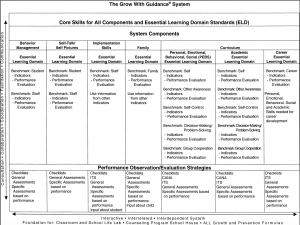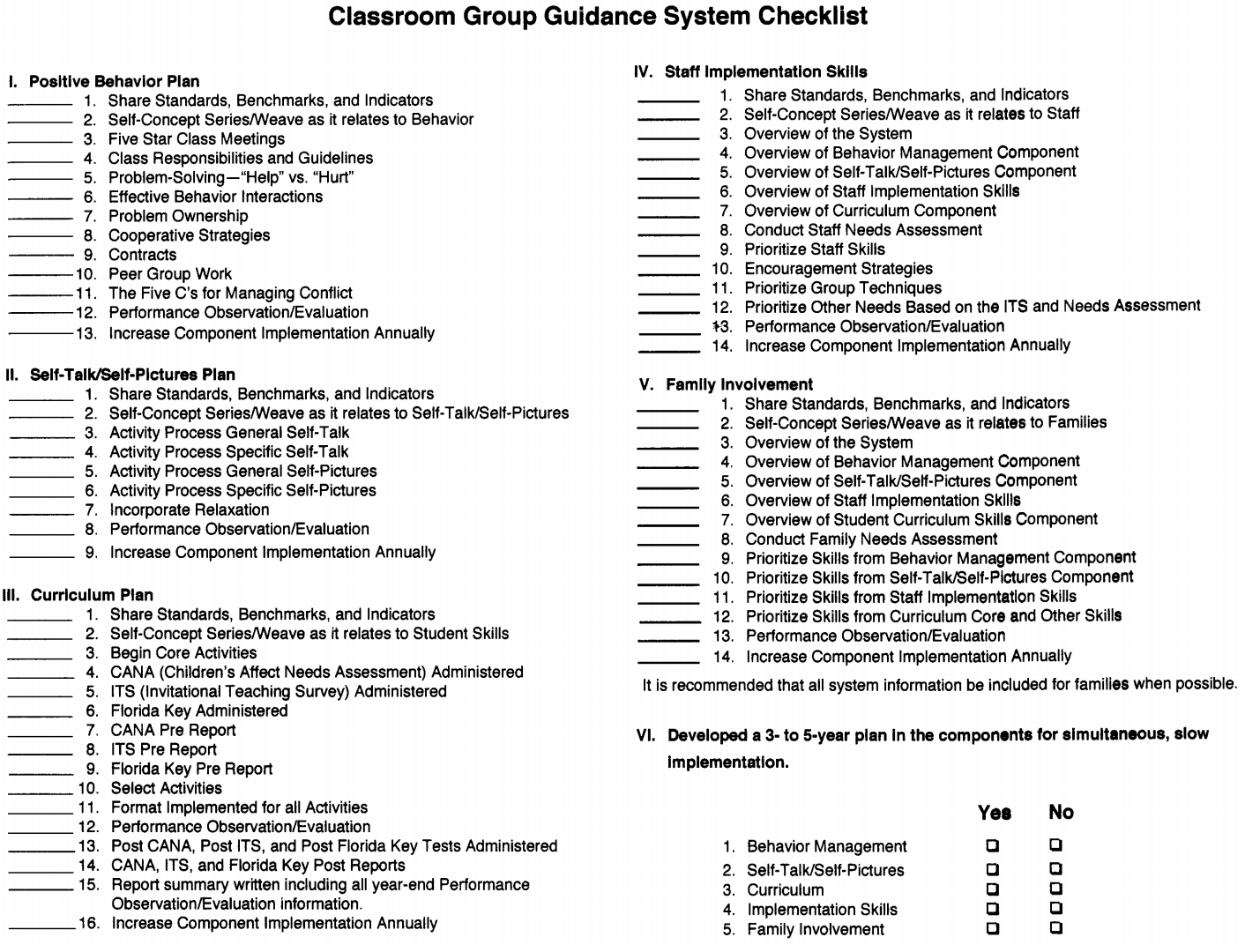Anxiety: Practices and Strategies for a Systemic Solution
Schools need a comprehensive plan to hit addictions head on through prevention and awareness. This presentation provides a formula to combat addictions and has links to use with important brain information that documents the impact of heroin addition. Use the presentation for strategic planning needed for prevention experiences.
AOCC Anxiety Presentation Color Poem 1MB
Anxiety: Practices and Strategies for a Systemic Solution
AOCC 2017 Conference Hilton Columbus at Easton Town Center November 10, 2017 Lunch and Learn Session 12:15 – 1:15
Contact information for additional questions:
Tommie Radd, PhD, LPC, NSCC, NBCC,CRC: Consultant
Phone: 614-607-1373; email: [email protected]; web site: www.allsucceed.com
Doris Coy, PhD, LPCS, NCC, NCCC:: Consultant
email: [email protected]
The internal environment people create has a dramatic impact on their ability to become and stay encouraged, optimistic and focused on growth and learning beyond any immediate success or challenge.
– Tommie R. Radd, PhD
Anxiety: Practices and Strategies for a Systemic Solution
Agenda
- Introduction – Self-Talk/Self-Pictures/Relaxation/Mindfulness Defined/Explained
- An Overview of System Anxiety Formula
- An Overview of School Counseling Program Components and Life Lab Information
- An Overview of Guidance System Components and Checklist:
- Behavior Management (extrinsic)
- Self-Talk/Self Pictures (intrinsic)
- Curriculum (student skills)
- Implementation (staff skills)
- Family Involvement
- Observation/Evaluation
- Activity and Ideas for Implementation
- Questions & Closing
- Comprehensive School Counseling Program System – Program Components Are Interrelated and Interactive
- Guidance System is the Foundation of the School Counseling Program
- the skills needed to handle anxiety are taught
- personal, social, emotional, and behavioral skills are viewed as a priority
- the educational community sees the importance of including personal, social, emotional, and behavioral skills as part of the core curriculum
- the relationship between academic learning and anxiety is taught and explained
- families receive the support and help they need
- classrooms are viewed as life labs for student support and belonging
- students receive ongoing assistance for anxiety management as opportunities occur
- Foundation: 40%
- Counseling Groups: 30%
- Individual Counseling: 10%
- All Others: 20%
- Foundation: 35-30%
- Counseling Groups: 30-35%
- Individual Counseling: 10%
- All Others: 25%
- Foundation: 30-25%
- Counseling Groups: 30-35%
- Individual Counseling: 10%
- All Others: 25-35%
- Behavior Management – Extrinsic – what we say and do
- Self-Talk & Self-Pictures – Intrinsic – what we say and believe with what we think and feel
- Curriculum – Student Skills
- Implementation – Staff Skills
- Family Involvement – Family Skills
- Observation/Evaluation
- Congruent
- Systemic – identify all components of the System or whole and understand the relationship between components
- Slowly and simultaneously
- 3-5 year process
- The Whole is larger than the sum of the parts
- Rational Emotive Therapy
- Adlerian Therapy
- Reality Therapy
- Cognitive Behavioral Therapy
- Self-Talk – Positive Internal Messages
- Self-Pictures – Positive Internal Pictures
- Relaxation – The State of Being Free From Tension and Anxiety (Oxford Dictionary)
- Mindfulness – Calm Body – Focus Mind
- Feel ALL as if the Truth!
- Think It! See It! Feel It! Be It!
- Become your Potential!!
- List 3 ways you can implement the strategies for yourself! Starting with YOU helps you to
feel more comfortable with helping others! - Brainstorm 3 ways you can incorporate a plan for your school based on the System and
Schoolhouse Information - Explain how the practices and strategies address anxiety for you, your school community
Anxiety
Merriam-Webster:
Medical :an abnormal and overwhelming sense of apprehension and fear often marked by physical signs (such as tension, sweating, and increased pulse rate), by doubt concerning the reality and nature of the threat, and by self doubt about one’s capacity to cope with it.
Overview of the System Anxiety Formula

Suggested Elementary Counselor Time Allocations
Suggested Middle/JR. High School Counselor Time Allocations
Suggested High School Counselor Time Allocations

Overview of a Guidance System


Life Lab
A way of defining the classroom as a simulation in which students, pre-K-12 and beyond, learn, experience, and apply the essential skills needed for life; the comprehensive developmental guidance system creates a life lab in every classroom through which students develop a conscious and intentional frame of reference that can be applied throughout life.
Theoretical Framework
A few of the theories that Include Self-Talk/SelfPictures in addressing in the treatment process:
Practices and Strategies
Remember:
General – Universal Specific – Personal – Relevant To An Individual
| Self-Concept Series Talk | Self-Concept Series Self-Pictures | |
|---|---|---|
| Step 1 | "I am important and special." | A self-picture that could accompany this Step 1 statement is a time or place that reminds the person of one’s personal worth just for being a unique person. It could be a picture of the person sitting peacefully, etc. Each person can choose a picture, which can be changed as desired. |
| Step 2 | "I help myself." | A self-picture that could accompany this Step 3 statement is of a time or situation that represents a person helping him or herself. It could be an image of the person smiling in the mirror, acting in a helpful way, etc. Each person can choose a picture, which can be changed as desired. |
| Step 3 | "I am responsible for me." | A self-picture that could accompany this Step 3 statement is of a time or situation that represents a person being responsible and accountable for his or her own actions. It could be the person following through on an assignment, apologizing for a mistake, etc. Each person can choose a picture, which can be changed as desired. |
My Personal Self-Talk/Self-Picture Plan Self-Talk/Self-Picture Plan Activity
Completing the Self-Talk/Self-Picture Plan incorporates the process for addressing anxiety:
My Personal Self-Talk/Self-Picture Plan
The Plan includes all components and is to be adjusted based on feedback and progress.
Your Action Plan
References
Radd, T. R. (2014). Teaching and Counseling for Today’s World: Pre-K-12 & Beyond Second Edition. Columbus, Ohio: Grow With Guidance. ISBN: 978-1-878317-58-2
Radd, T. R. (2014). Teaching and Counseling for Today’s World: Pre-K-12 & Beyond Second Edition, e-book. Columbus, Ohio: Grow With Guidance. ISBN: 978-1-878317-61-2
Radd, T. R. (2007). The Grow With Guidance System Manual Third Edition. Omaha, Nebraska: Grow With Guidance. ISBN: 978-1-878317-53-7 (1-878317-53-9).
Radd, T. R. (2014). The Grow With Guidance System Manual Third Edition, e-book. Columbus, Ohio: Grow With Guidance. ISBN: 978-1-878317-59-9
Radd, T. R. (2007). The Grow With Guidance Primary Level Third Edition. Omaha, Nebraska: Grow With Guidance. ISBN: 978-1-878317-54-4 (1-878317-54-7).
Radd, T. R. (2014). The Grow With Guidance Primary Level Third Edition, e-book. Columbus, Ohio: Grow With Guidance. ISBN: 978-1-878317-60-5
Radd, T. R. (2007). The Grow With Guidance Intermediate Level Third Edition. Omaha, Nebraska: Grow With Guidance. ISBN: 978-1-878317-55-1 (1-878317-55-5).
Radd, T. R. (2014). The Grow With Guidance System Intermediate Level Third Edition, e-book. Columbus, Ohio: Grow With Guidance. ISBN: 978-1-878317- 62-8
Radd, T. R. (2007). The Grow With Guidance Middle School Level Third Edition. Omaha, Nebraska: Grow With Guidance. ISBN: 978-1-878317-56-8 (1-878317-56-3).
Radd, T. R. (2014). The Grow With Guidance Middle School Level Third Edition, e-book. Columbus, Ohio: Grow With Guidance. ISBN: 978-1-878317-63-6
Radd, T. R. (2007). The Grow With Guidance High School Level Third Edition. Omaha, Nebraska: Grow With Guidance. ISBN: 978-1-878317-57-5 (1-878317-57-1)
Radd, T. R. (2014). The Grow With Guidance High School Level Third Edition, e-book. Columbus, Ohio: Grow With Guidance. ISBN: 978-1-878317-64-4 References
Radd, T. R. (2006). Classroom Activities for Teachers, Counselors, and Other Helping Professionals Pre-K–12 & Beyond Vol. I. Omaha, Nebraska: Grow With Guidance. ISBN: 1-878317-45-8
Radd, T. R. (2014). Classroom Activities for Teachers, Counselors, and Other Helping Professionals: Pre-K-12 & Beyond Vol I. Second Edition, e-book. Columbus, Ohio: Grow With Guidance. ISBN: 1-878317-65-2
Radd, T. R. (2006). Classroom Activiites for Teachers, Counselors, and Other Helping Professionals Pre-K–12 & Beyond Vol. II Omaha, Nebraska: Grow With Guidance. ISBN: 1-878317-46-6
Radd, T. R. (2014). Classroom Activities for Teachers, Counselors, and Other Helping Professionals: Pre-K-12 & Beyond Vol II Second Edition, e-book. Columbus, Ohio: Grow With Guidance. ISBN: 1-878317-65-
Radd, T. R. (2014). The Grow With Guidance System Music: G. G. Raddbearie Sings, e-book. Columbus, Ohio: Grow With Guidance. ISBN: 978-1-878317-68-7
Radd, T. R. (2007). The Grow With Guidance® System Music: G.G. Raddbearie Sings. Omaha, Nebraska: Grow With Guidance. isbn: 978-1-878317-47-6 (1-878317-47-4).
Radd, T. R. (2014). The Grow With Guidance System Fun Game Second Edition, e-book. Columbus, Ohio: Grow With Guidance. ISBN: 978-1-878317-67-9
Radd, T. R. (2007). The Grow With Guidance® System F.U.N. Game, Second Edition. Omaha, Nebraska: Grow With Guidance. ISBN: 978-1-878317-49-0 (1-878317-49-0)
Radd, T. R. (2006). The History, Development, and Research of the Educational Systems Model: The Grow With Guidance® System. Omaha, Nebraska: Grow With Guidance. isbn: 978-1-878317- 52-0 (1-878317-52-0).
A complete Research Report is available here.